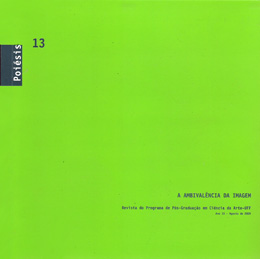Heroísmo forjado no apagamento das polifonias: o canto das esposas da colônia militar de Murphy Canyon, San Diego, Califórnia
DOI:
https://doi.org/10.22409/poiesis.1013.212-239Keywords:
arte colaborativa, comunidade, Althea ThaubergerAbstract
A história da arte contemporânea tem presenciado a emergência em profusão de projetos de arte desenvolvidos em estreita colaboração com as comunidades, em práticas que aprofundam a crítica do modernismo. O projeto Murphy Canyon Choir / Coro de Murphy Canyon, da artista canadense Althea Thauberger, se configura como uma oportunidade singular para reflexões em torno dessas práticas de colaboração na contemporaneidade.Downloads
References
Bishop, C. (2006). “Introduction / Viewers as Producers”. In: (ed.). Participation. Londres: Whitecapel,
Cambridge, Mass.: The MIT Press.
Brenson, M. (1995). “Healing the Time”. In: Jacob, M. J,; ; e Olson, E. Culture in Action. Seattle, Wash.:
Bay Press.
Buren, D. (2004). “The Function of the Studio”. In: Doherty, C. (ed.). From Studio to Situations: Contemporary
Art and the Questions of Context. Londres: Black Dog Publishing.
Bürger, P. (1993, 1974). Teoria da vanguarda. Lisboa: Vega / Universidade.
Davis, M., Mayhew, K., e Miller, J. (2003). Under the Perfect Sun – The San Diego Tourists Never See. Nova
York: The New Press.
Doherty, B. (2007). Studio and Cube: On the Relationship Between Where Art is Made and Where Art is
Displayed. Nova York: Columbia University.
Doherty, C. (2004). “The New Situationists”. In: (ed.). From Studio to Situations: Contemporary Art and
the Questions of Context. Londres: Black Dog Publishing.
Gablik, S. (1996). “Connective Aesthetics: Art after Individualism”. In: Lacy, S. (ed.). Mapping the Terrain – New
Genre Public Art. Seattle, Wash.: Bay Press.
Groys, B. (2008). “A Genealogy of Participatory Art”. In: San Francisco Museum of Modern Art. The Art of
Participation: 1950 to Now. Nova York: Thames & Hudson.
Kester, G. H. (2004). Conversation Pieces: Community + Communication in Modern Art. Berkeley, Cal.:
University of California.
Kwon, M. (2002). One Place After Another: Site-Specific Art and Locational Identity. Cambridge, Mass.: The
MIT Press.
Lacy, S. (1996). “Cultural Pilgrimages and Metaphoric Journeys”. In: _____ (ed.). Mapping the Terrain
– New Genre Public Art. Seattle, Wash.: Bay Press.
Phillips, P. C. (1998). “Temporality and Public Art”. In: Senie, H. F., e Webster, S. (eds.). Critical Issues in Public
Art. Washington e Londres: Smithsonian Institution Press.
Stimson, B., e Sholette, G. (2007). “Periodizing Collectivism”. In: (eds.). Collectivism after Modernism: The
Art of Social Imagination after 1945. Mineápolis: University of Minnesota Press.
Downloads
Published
How to Cite
Issue
Section
License
Authors who publish in Revista Poiésis agree to the following terms:
- The authors keep the copyright and grant the journal the right of first publication. The work is automatically licensed under the Creative Commons Attribution License, which enables its sharing as long as the authorship and initial publication in this journal are acknowledged.
- Authors are allowed and encouraged to distribute online their work published in Revista Poiésis (in institutional repositories or in their own personal page), since this can generate productive interactions, as well as increase the impact and citation of the published work (See The Effect of Free Access).


